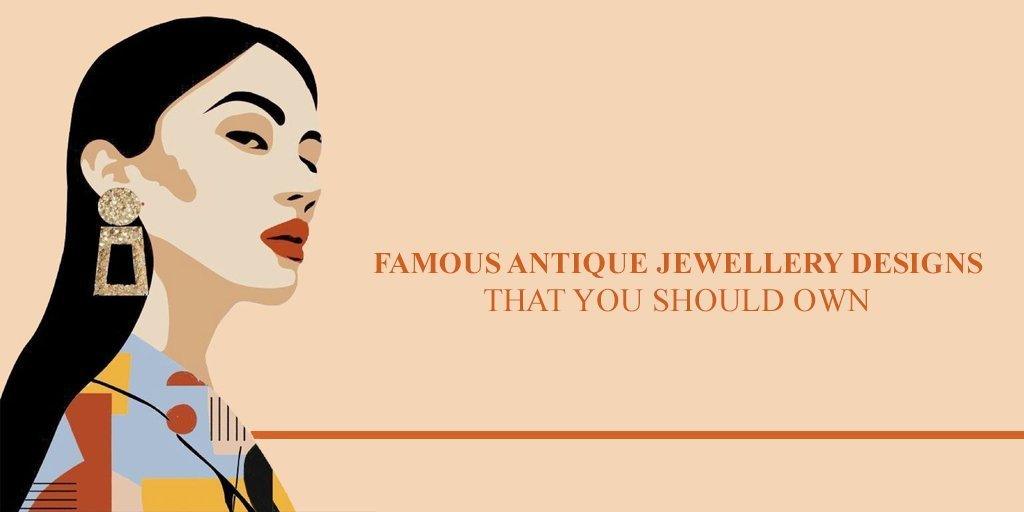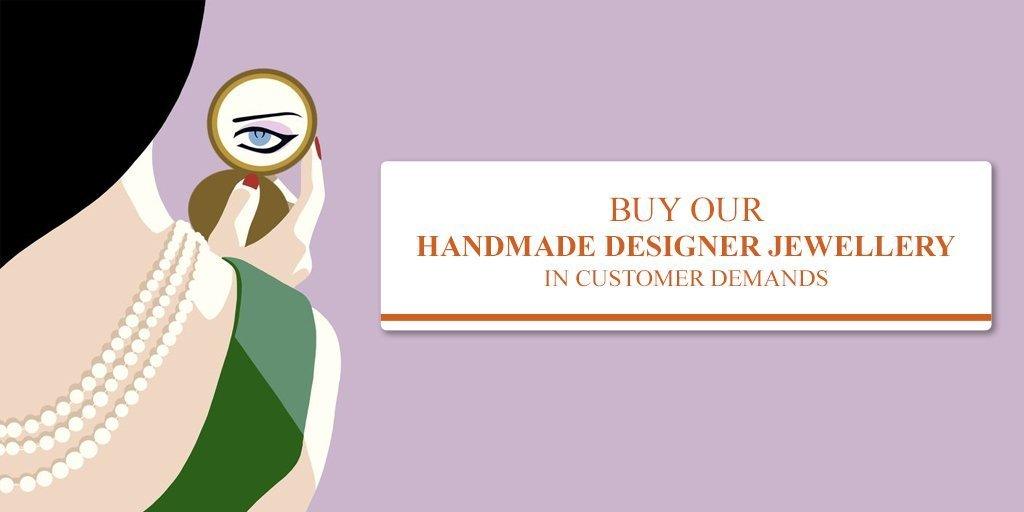
Famous Antique Jewellery Designs That You Should Own
Antique gold jewellery is all about this season. Due to its rustic, time-worn looks, retro atmosphere, exclusive elegance, state-of-the-art artistry, antique jewellery is becoming highly popular in modern times. Our obsession with jewellery goes back to the civilization of the Indus Valley.
We have a glorious tradition of excellent craftsmanship, centuries when our incredible craftsmen sculpted together what will possibly be the most sought-after set of handmade accessories in the world. While technology and computers have replaced craftsmanship today, a few artisans have survived to pass on our valuable jewellery-making traditions and techniques to new generations. Today, the royal remains of our sensational past are antique jewellery designs.
Antique jewellery typically belongs to the nearly 100-year-old period and, over the years, has survived incremental human evolution. However, it does not always indicate jewellery that is pre-worn or passed down. It typically refers to jewellery crafted from old royal-age jewels or jewellery inspired by these adorable antique designs from the period of yore. By its distinctive style, luster, and materials used, antique Indian jewellery can be well recognized. These may usually be classified by the age they belong to.
Why is antique jewellery valuable?
Anything made with human hands, especially when it comes to jewellery, has more value than machine-made items. Antique handmade fashion jewellery is considered invaluable since it follows the expertise of old-age artisans who were pioneers in hand-making jewellery. Although lathes and drills are used at some stage, there is the only human effort in the dominant part of the work. The queens and kings of the old days treated the artisans who made handmade jewellery with a lot of respect.
Antique jewellery has an undiminished significance in today's fashion world, where jewellery still mainly holds an essential place in women's lives. Antique jewellery is regarded and preserved as valuable property, particularly as an heirloom. The materials are also in vogue, including terracotta, lac, bead and stone jewellery, filigree, meenakari, Kundan and ivory jewellery.
The purpose of getting antique jewellery
For any ethnic dress, antique jewellery is fine. It's a unique and elegant kind of traditional ornament that gives an individual a classic royal look. Exquisite decoration and detailed designs are the work of specially qualified designers of jewellery. You will be shocked to see that every piece of antique jewellery is genuinely exquisite and incomparable. You can get them through handmade jewellery online shopping quickly.
Types of antique jewellery
Antique jewels will cause one to delve deeply into the rich folklore connected with their life. Their striking antique rustic beauty and lively colours are also enough to catch one's attention and never let go of it. A few antique Indian jewellery styles are below, which are still very popular:
Tarakashi
A changed version of the Greek Filigree job, this unique art form was produced in Orissa. It is inspired by nature and shows a rare combination of utility and elegance. Most tarakashi designs in fine wire display intricate elements of flora and fauna. A "charkha" was usually used to swirl out brooches, necklaces, hoops, and pendants. But now, due to their unique antique style, even tarakashi rings, toe-rings, anklets, and hairpins are becoming extremely common.
Pachchikam Jewellery
This art form derives its name from the Gujarati word "Pachchigar," meaning a goldsmith, originating from the Kutch of Gujarat. Pachchikam jewellery is crafted using soft shimmering metals. Typically, Pachchikam rings, bangles, anklets, trinkets, jhumkis, and pendants add colour to glass beads and semi-precious metals.
Meenakari Jewellery
This artistic jewellery type utilizes enamelling to amplify the ornament's aesthetic coefficient. Typically, though the designs are engraved on it, this art form is relatively laborious and is typically held on lac sticks. Later, in these grooves, fine coloured enamel dust is poured and then heated until the dust liquefies and spreads all over the groove. Bikaner (Rajasthan), Varanasi (Uttar Pradesh), Hyderabad (Andhra Pradesh), and Kolkata's Meenakari work are extremely popular all over the world.
The Kundankari Jewellery
This art style emerged in the Rajasthani and Gujarati royal courts in the early 19th century, and the beauty and unique claw setting of Kundan is undoubtedly challenging to ignore. Kundankari stone-encrusted jewels are also frequently linked with brightly colourful Meena. Even today, new, fashion-conscious brides use Kundan wristlets, necklaces, earrings, and anklets.
Jadau Jewellery
This style of studded jewellery seems to be removed directly from the Mughal period, mixing the elegance of Meenakari's work and the extravagance of Kundankari. As embellishments, this setting technique utilizes uncut polkis and semi-precious stones. Gold or silver colored foil usually is wrapped around the polki to make it more glowing. The polki is then pushed and inserted into the lac framework, which is then finished using a metal. Even in Jadau jewels, colorful semi-precious and precious stones are studded to fit the brides.
Victorian Jewellery
Influenced by the European style's jewels brought and adorned by the British invaders, the Victorian style's jewels are made with cheap garnets, corals, and other materials commonly available.
Undoubtedly, with traditional outfits such as Saris, Salwaar Kameez, Ghagra Cholis, and Dhoti Kurtas, antique Indian jewellery gels up very well with this latest handmade jewellery. Still, it can also be mixed and matched with current outfits. Besides, in a daily fashion, antique jewels can also be very well integrated. E.g., with a trendy antique necklace or even a bangle or two, a straight, inexpensive, casual Indian suit can be jazzed up. Similarly, to achieve an Indo-Western look, Indian jewellery can be combined with trendy dresses and gowns.
Maintaining Antique Jewellery
It is essential to take care of it properly to maintain the distinctive rustic charm of Antique jewellery. For example, extensive dust, sunlight, or rain exposure will make the jewel lose its earthy lure. Similarly, it can be immediately harmed and remove its relic appeal by rough handling or intensive scrubbing, cleaning, or washing. It is, therefore, necessary to store all jewellery pieces in anhydrous conditions safely. All the antique jewellery has a reasonable price with subtle detailing of work. Online shopping for such an elegant collection of jewellery is a great experience.


